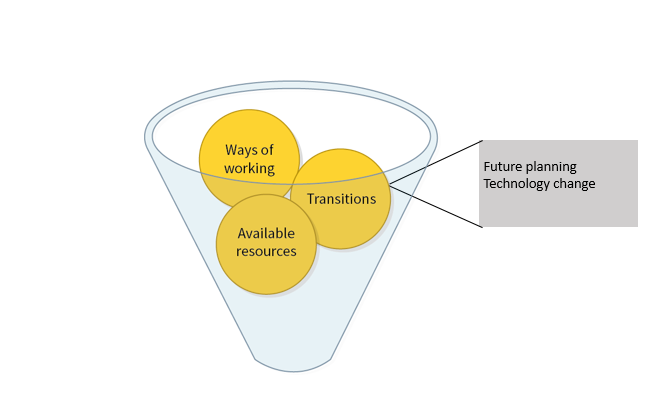Transitions
Transitions encompass future planning for predicted changes for the child or young person as well as ongoing changes in technology.

Future planning
This refers to any future planning including expected change, how you intend the future AAC system to look and function, and how the child or young person may be communicating. It also includes changes in the environment or setting such as changes in educational provision or staff providing services. Findings suggest that expected change in the child or young person’s future influenced decision-making.
Implications
- Consider traditional transitions and ensure information about communication needs and plans flows from existing to new settings (e.g. change of class, school or college).
I-ASC Resources
Other Resources
Communication Passports: https://www.callscotland.org.uk/downloads/quick-guides/communication-passports/
Please email i-asc@mmu.ac.uk if you know of resources that should be included here
Learn more
Lynch, Y., Murray, J., Moulam, L., Meredith, S., Goldbart, J., Smith, M., Batorowicz, B., Randall, N., and Judge, S. (2019) Decision making in communication aid recommendations in the UK: Cultural and contextual influencers Augmentative and Alternative Communication
Technology change
This describes the influence of technology change. How it has or will influence future decision making. Technology change includes transitions across different AAC systems for the child or young person. It also includes society’s awareness or understanding of technology and AAC and how awareness is changing over time. Finally, it also includes obsolescence and technology advancement (as well as wishlists for advancement).
Implications
- Be mindful that different people have different expectations based on their overall awareness and experience of technology. Engage in discussion to ensure a shared understanding and expectation of AAC. This should include how AAC technologies relate to off the shelf technologies.
- Where decisions are delayed due to expected updated versions of the technology, ensure existing systems are adequate to support the child’s needs in terms of communication and language development.
I-ASC Resources
Other Resources
Resource on What is AAC? https://www.communicationmatters.org.uk/page/what-is-aac
Speech bubble communication aid database: https://speechbubble.org.uk/
Please email i-asc@mmu.ac.uk if you know of resources that should be included here
Learn more
Lindsay, S. (2010). Perceptions of health care workers prescribing augmentative and alternative communication devices to children. Disability and Rehabilitation: Assistive Technology, 5, 209-222. doi: 10.3109/17483101003718195
Lynch, Y., Murray, J., Moulam, L., Meredith, S., Goldbart, J., Smith, M., Batorowicz, B., Randall, N., and Judge, S. (2019) Decision making in communication aid recommendations in the UK: Cultural and contextual influencers Augmentative and Alternative Communication